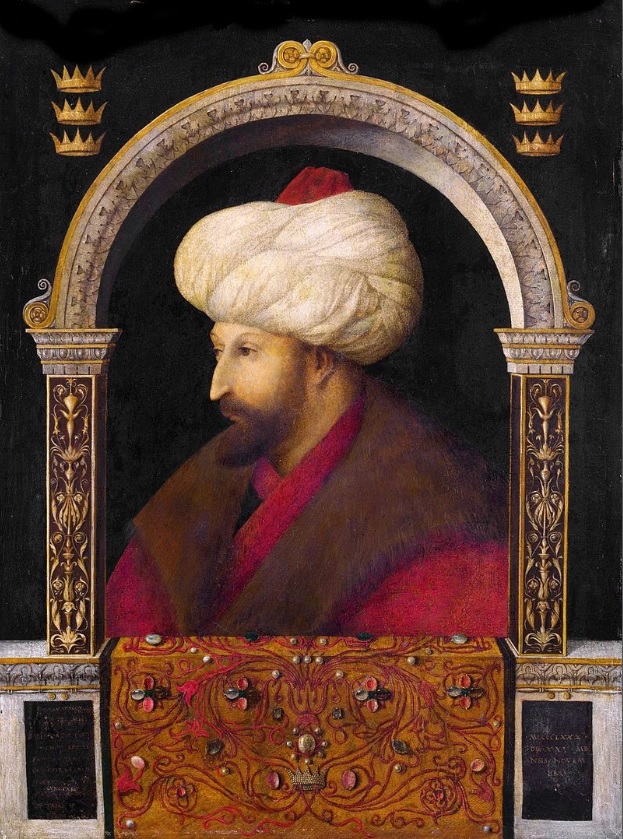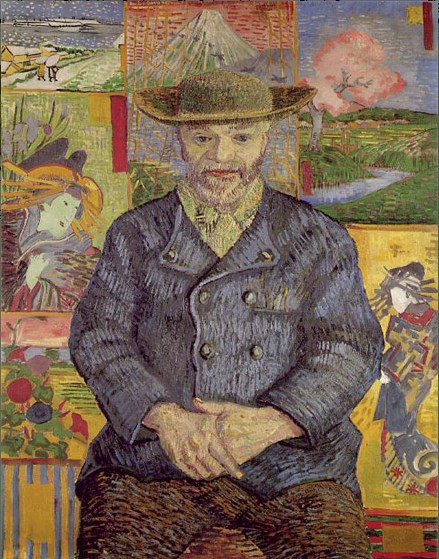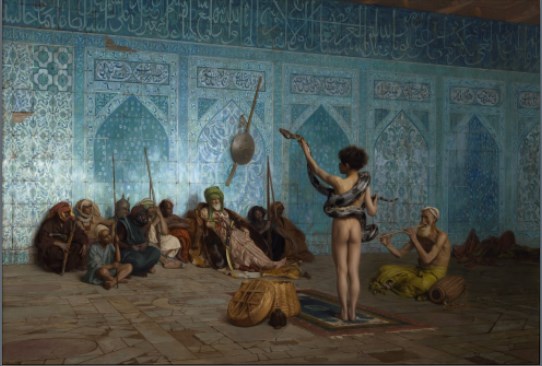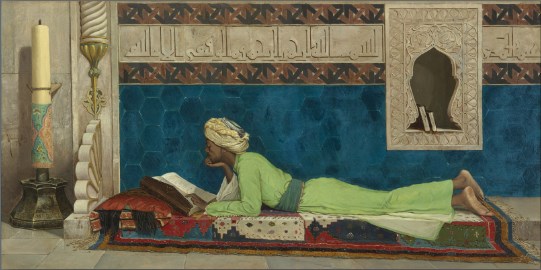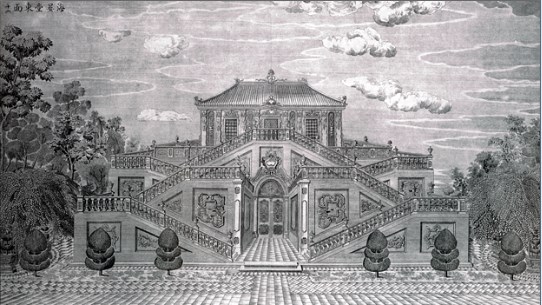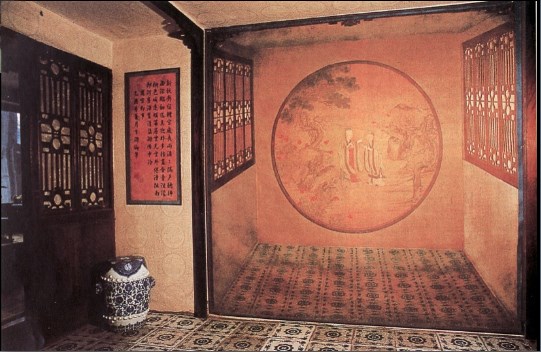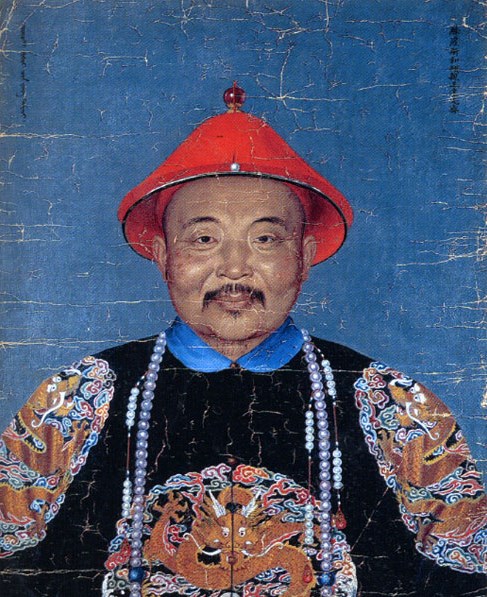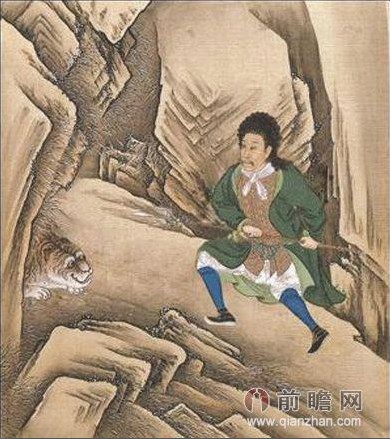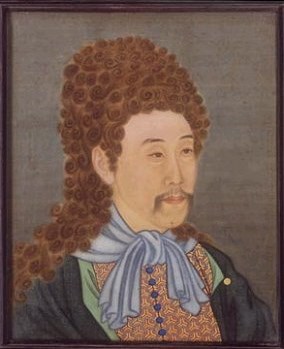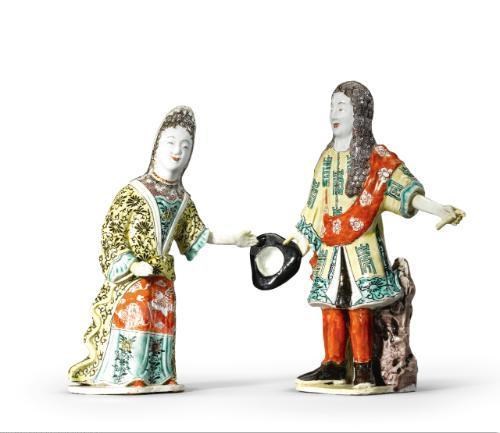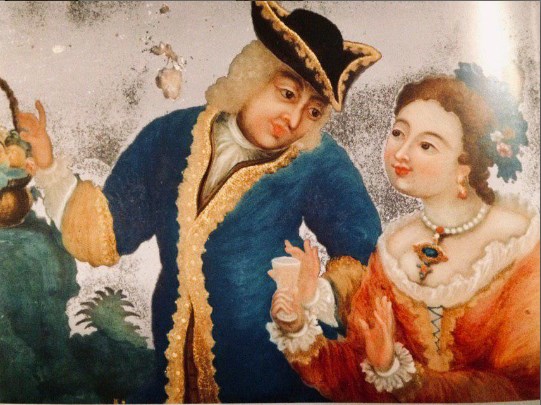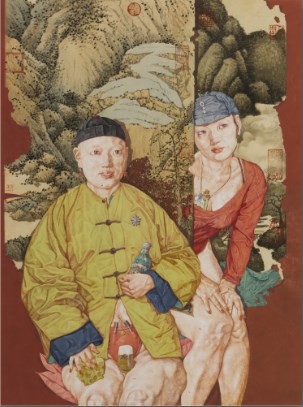Ориентализм и оксидентализм: место и время встречи
The East’s and West’s ambitions to comprehend one another, immortalised by Kipling as early as 1889 in his abundantly cited Ballad of East and West2, were always quite painful. As a problem it was first attested in European historiography probably during Greco-Persian Wars (499–449 BC) in their depiction by Herodotus (484–425 B.C.) and his younger contemporary general Thucydides (460–400 B.C.), and in the East – China being this author’s traditional focus – during the times of the first centralised dynasties (Qin and Han 221 B.C. – A.D. 220). The reason for this painfulness is quite clear. The two great civilisational cauldrons – Europe, which birthed the first Western empires (the Hellenistic Empire of Alexander the Great and Ancient Rome), and the East with its gentleman’s set of great imperial formations, ranging from Neo-Assyrian Empire and Alexander's contemporary Persian Empire of the Achaemenides to the Far Eastern civilisational hub of Ancient China beginning from Han (206 B.C. – A.D. 220), eventually recognised each other's existence on the other pole of the oecumene. And while this realisation readily extrapolated to the realm of legends and myths, palpable artefacts (such as silk or works of applied arts) as well as less material but no less factual things (like beliefs, gods, fantastic beasts, and graphic motifs) were also in ample evidence. These couldn’t be easily discarded, nor easily reconciled with the existing fabric of life. Similarly, the Great Migration Period (4th to 6th centuries A.D.), when whole peoples from the East re-settled to the West, effected a radical change in the European civilisational paradigm.
It dawned on thinkers and potentates of the West rather early, therefore, that differences between civilisations in the opposite ends of the Earth were many and momentous. And, despite all the attempts to work out at least some consolation vocabulary3, they were acutely aware of the fact that from the East came not only light (Ex Oriente lux), but also darkness (Russian word t'ma / тьма, both meant “darkness” and denoted Mongol hordes in Turkic and Russian languages). As a result, the space in the European thought discourse reserved for Eastern countries and peoples was drastically different from the Western space, where, despite all controversies and wars, people and events were perceived as «our own». Already in this setup we discover the roots of the phenomenon which Edward Said would immortalise by appropriating the word more commonly found in the thesaurus of historians of art and culture – Orientalism.
This appropriation, while apt, gives rise to an important difference. We should distinguish between Orientalism as a term for Westerners studying East (and all the complex attitude problems inherent therein), Oriental Studies, which we owe to Edward Said4 (1978), and Orientalism as an art movement.
Fig. 1. Attributed to Gentile Bellini. Portrait of the Sultan Mehmet II Fatih. 1480. Oil (19th-c. repaint) on canvas, transferred from wood. 69.9×52.1 cm. © National Gallery, London
Fig. 2. Vincent van Gogh. Portrait of Père Tanguy. 1887. Oil on canvas. 65.0×51.0 cm. © Musée Rodin, Paris
This latter phenomenon became easily discernible around late 15th– early 16th century, when Europe encountered the Ottoman Empire. It was then that artists like Gentile Bellini (c. 1429–1507) not only painted great rulers – like Mehmed II Fatih, the captor of Constantinople (1432–1481) (Fig. 1) – but also provided pictorial evidence of various events (diplomatic, anthropological, and genre) to European spectators in the West [see: Nefedova, 2009(1); Nefedova, 2009(2)]; finally, around the 19th century, this artistic fascination with remote alien subjects at last got its own umbrella term. Now, if we try and decompose this Orientalism in art into notable movements that succeeded one another, we will see that, in Europe, the most prominently represented ones were turquerie (since 16th c.); then chinoiserie (the movement existed in European culture since the middle of the 17th century); and lastly, japonisme – a term introduced originally by the French art critic Philippe Burty (1830–1890) in 1872, and one to which even Vincent Van Gogh (1853–1890) paid tribute (Fig. 2).
Fig. 3. Jean-Leon Gerome. The Snake Charmer. 1880. Oil on canvas. 84×122 cm. © The Sterling and Francine Clark Art Institute, Williamstown (Massachusetts, USA)
Fig. 4. Osman Hamdi Bey. Young Emir Reading Quran. 1878. Oil on canvas. 45.5×90 cm. Louvre, Abu-Dhabi. Photo © Louvre Abu Dhabi / Agence Photo F
Still, the way art history sees Orientalism is not without its faults. To give just one example of such a terminological hodgepodge, a number of Western, Turkish and Russian researchers are locked in an argument whether Osman Hamdi-bei (1842–1910) – a famous Turkish archaeologist and painter, founder of the Archaeological Museum in Istanbul and disciple of one of the leaders of European Orientalism in painting, Jean-Leon Gerome (1824–1904) – whose famous painting The Snake Charmer (Fig. 3) became an iconic representation both of Said’s Orientalism and of Orientalism as an artistic movement, was an Orientalist himself… or just a faithful native Turkish artist [Vyazemskaya, 2019] (Fig. 4).
Fig. 5. Unknown court masters (Giuseppe Castiglione’s workshop?). Residence of the Western Ocean (Xiyang Lou) in the Emperors’ residence Yuanming-yuan. Front of the Yuanyingguan. Copperplate etching (from a set of twenty etchings depicting Xiyang Lou). 1786
Fig. 6. Attributed to Giuseppe Castiglione (Lang Shining) and Jin Tianbiao. Spring’s Peaceful Message. Mid 18th c. Scenic illusion affixed hanging scroll. Ink and color on silk. 201×207 cm. The Three Treasures Hall (The Room of Three Rarities; Hall of Mental Cultivation) in the Forbidden City (Gogong Palace Museum reconstruction), Beijing
Fig. 7 Jean-Denis Attiret. Portrait of Mongolian Khan Dawachi (? – 1759). Ca. 1755. Oil on paper. 71×55. 5 cm. © Ethnologisches Museum, Staatliche Museen zu Berlin
In a somewhat symmetric process, in 18th c. Qing China (by then conquered by Manchus) developed a notable interest for the West – and, as was habitual for the Celestial Empire, this new fashion originated at court, in our case the court of a foreign, non-Han dynasty. However, by the time of the so-called Three Great Reigns – those of the Emperors Kangxi (1661–1722), Yongzheng (1722–1735) and Qianlong (1735–1796) – this dynasty had sufficiently mastered and domesticated the Han Chinese culture via Chinoiserie in reverse (中國風; zhongguo-feng), called so by [Neglinskaya, 2015], to begin reaching further – plus ultra – to the West. And the Emperors were omnivorous, interested not only in mathematics, astronomy, calendar reforms, cartography, and mechanical wonders and machinery (see, e.g., [Spence, 1988]), all of which were introduced to the court by Western missionaries (first of all by the Jesuit brothers), but also in Western art. This fascination with the West’s theoretical and practical achievements in architecture and painting bore assorted fruit. For example, it led to the creation of the Xiyang Lou (西洋楼) palace and park complex, executed fully in Western style within the Emperor’s gigantic Yuanming Yuan (圓明園) residence (Fig. 5). It manifested itself in numerous works of painting, etching, and applied arts where European linear perspective was implemented as xian-fa (hua) (線法 (画)) technique [see: Dubrovskaya, 2018 (1)]); in chiaroscuro modelling and tromp-l'oeil paintings [Dubrovskaya, 2018 (3)]; in oil paints applied on the paper base, and nature studies [Dubrovskaya, 2018 (2)] (Figs. 6–7). It was, in other words, a phenomenon complementary to the Western Orientalism, and one that we believe should be appropriately named Occidentalism5.
Fig. 8. Unknown court painter. Emperor Yongzheng dressed as a European Gentleman during the Tiger Hunt. Yongzheng era (1722–1735). One of the fourteen pages from The Album of the Emperor’s Costume Portraits. Ink and colours on silk. 34.9×31 cm. Gogong Old Palace Museum, Beijing
Figure 9. Unknown court painter. Portrait of the Yongzheng Emperor in European Wig and Attire. Yongzheng era (1722–1735). Wall hanging screen. Colour on silk, wood. 68.5×51 cm. Gogong Old Palace Museum, Beijing
Fig. 10. Unknown Master. A Pair of Figurines of the Qing era depicting Louis XIV and Madame de Maintenon. After 1670. Porcelain. Sold at Sotheby’s Auction (London, 2011). Height: 15.4 cm. Private collection. Photo © Sotheby’s
Fig. 11. Unknown court masters. Screen, Depicting a Gallant Scene. Painting on glass (mirror), wood, carving. 105.5×64.5×32 cm. Gogong Old Palace Museum, Beijing
Occidentalism was a broad and permanent trend that was bigger than just the interest in the West, introduction of some features of Western painting techniques, or utilisation of new media. It developed its own thematic repertoire, widely exploited costumed events and change of wardrobe, created specific subject ideas and of course romanticised images imported from the West [Dubrovskaya, 2018 (4)] (See: Figs. 8–11). Yet sadly, Occidentalism cannot boast of a list of works or artists quite as exhaustive or impressive as Orientalism; and even despite our wish to see in it a full-fledged movement that somehow mirrored Orientalism, the two nevertheless remained quite asymmetrical. The reason is simple (and ultimately tragic): on both sides, and throughout the Three Great Reigns, it was clear that the existential doctrines were very different for the East and the West. West preferred to expand, often at the expense of East’s territory; East remained encapsulated within said territory. Unsurprisingly, soon a bizarre marriage arose, and concurrently with the elitist, court-inspired Occidentalism came Occidentophobia, manifesting itself most famously in the Boxer (Yihetuan) Rebellion (1899–1901), Qing China’s grim and gory greeting to the 20th century.
But there were notable exceptions. For example, a well-known casus of the famous Chinese general Ban Chao (班超; A.D. 32–102), who in A.D. 97 tried to send to Rome (Chinese Daqin; 大秦) an embassy headed by one Gan Ing (甘英; ?–?). Gan Ing failed to reach the city (even though all roads led to it) because he was stopped by the more Western (relative to China) Parthians, and feared to undertake a voyage across the Persian Gulf [Hill, 2009, p. 5–25]. There are a few conclusions here, besides the obligatory ones that habitually concentrate on transit trade in silk along the Silk Road between the Country of Seres (where, according to the Roman beliefs, people would comb down silk from trees) and the Western world. Firstly, Ancient Rome knew about Ancient China (no matter how the latter was called); secondly, Ancient China knew about Ancient Rome; thirdly and more importantly still, Ancient China wanted to know about Ancient Rome more than it had already known – through diplomatic means at that – and initiated the contact6. Here, therefore, cultural Occidentalism was in evidence, and it clearly preceded Orientalism; but overall this doesn’t, of course, disprove the general observation that the vector of vivid exploratory interest for the most part was always pointed from the West to the East7.
7. It is unfortunately beyond the scope of a small article – although within the scope of this author’s ambition – to study the intricacies of this mutual interest throughout its history. And so we do not comment here, for example, on the recently popularised theory that the Terracotta Guard of Emperor Qin Shihuang (reign 221–210 B.C.) was heavily influenced by Hellenistic art that spread in the East after the conquests of Alexander the Great [Montgomery, Cammack, 2016]. Still, such an idea alone speaks volumes about the contemporary tendency to see the chronology and geography of the East-West interface as much older and broader than is normally thought.
Fig. 12. Wei Dong. Interior Series No. 1, 1999. Ink and color on paper, 66.4×49.5 cm. Photo © Sotheby’s HK
In a somewhat provocative summary, this author believes the thought space that pertains to the mutual permeability of Western and Eastern histories, arts, and cultures needs to be rather thoroughly cleansed of both victimisation and oppressor’s guilt. The relationship between the studying and the studied – ‘Western’ and ‘Eastern’ civilizations respectively (see., e.g., [Dubrovskaya, 2018(4), Dubrovskaya, 2019(1–2)]; Fig. 12) – was never one-sided, as the whole phenomenon of Occidentalism shows. Indeed, the way the East assimilated the West’s achievements, improved upon their shortcomings, and then exported them back is a field of study straddling many disciplines and offering valuable insight not only historical, but also strategic. We would not be too surprised to see, in some foreseeable future, the academic community hotly debating some new revolutionary theses of an Art History monograph titled ‘Occidentalism’.



